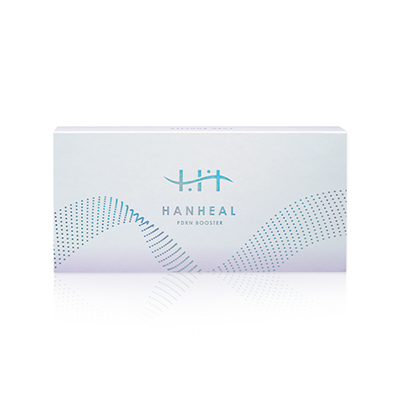You have no items in your shopping cart.
![LIDOCAINE HCL 2% [DAIHAN]](http://image.dovesol.com/Pictures/Thumbnail/thumbnail_dovesol_1_2022216132600.jpg)
Lidocaine HCl 2%
Lidocaine HCl is rapidly and completely absorbed following parenteral administration. Absorption rates vary based on the administration site and the presence of a vasoconstrictor agent. Blood levels peak highest following intercostal nerve block and lowest after subcutaneous administration. Lidocaine HCl binds to plasma proteins in a concentration-dependent manner, with 60-80% bound at concentrations of 1 to 4 mcg/mL. Binding is also influenced by the plasma concentration of alpha-1-acid glycoprotein.
Lidocaine HCl crosses the blood-brain and placental barriers through passive diffusion. The liver rapidly metabolizes it, and both metabolites and unchanged drug are excreted by the kidneys. Biotransformation includes oxidative N-dealkylation, ring hydroxylation, cleavage of the amide linkage, and conjugation. Major metabolites include monoethylglycinexylidide and glycinexylidide, which are less potent than the parent compound. Approximately 90% of administered lidocaine HCl is excreted as various metabolites, with less than 10% excreted unchanged. The primary urine metabolite is a conjugate of 4-hydroxy-2,6-dimethylaniline.
The elimination half-life following an intravenous bolus injection is 1.5 to 2 hours. Conditions affecting liver function may significantly alter lidocaine HCl kinetics, potentially doubling the half-life in patients with liver dysfunction. Renal dysfunction does not affect lidocaine HCl kinetics but may increase metabolite accumulation. Acidosis and CNS stimulants/depressants can affect the CNS levels needed for systemic effects. Plasma levels above 6 mcg/mL can cause adverse effects, with arterial levels of 18-21 mcg/mL in rhesus monkeys linked to convulsive activity.
Indications and Usage
Lidocaine Hydrochloride Injection is indicated for local or regional anesthesia through infiltration techniques such as percutaneous injection and intravenous regional anesthesia by peripheral nerve block techniques (e.g., brachial plexus, intercostal) and central neural techniques (e.g., lumbar, caudal epidural blocks) when standard procedures are observed.
Contraindications
Lidocaine HCl is contraindicated in patients with a known hypersensitivity to amide-type local anesthetics.
Warnings
Lidocaine Hydrochloride Injection should only be used by clinicians experienced in diagnosing and managing dose-related toxicity and acute emergencies associated with the block employed. Immediate availability of oxygen, resuscitative drugs, cardiopulmonary equipment, and trained personnel is essential. Delay in managing dose-related toxicity, underventilation, or altered sensitivity may lead to acidosis, cardiac arrest, and possibly death.
Pregnancy and Nursing Mothers
- Pregnancy: Animal studies have shown no harm to the fetus at doses up to 6.6 times the human dose. However, there are no well-controlled studies in pregnant women. Caution is advised, especially during early pregnancy.
- Nursing Mothers: It is unknown if lidocaine HCl is excreted in human milk. Caution is advised when administering to nursing women.
Overdosage
Acute emergencies related to local anesthetics are often due to high plasma levels or unintended subarachnoid injection. Management includes careful monitoring, maintaining a patent airway, and providing assisted or controlled ventilation with oxygen. If convulsions persist, administer small increments of an ultra-short-acting barbiturate or benzodiazepine intravenously. Supportive treatment of circulatory depression may require intravenous fluids and vasopressors. Standard cardiopulmonary resuscitative measures should be instituted if cardiac arrest occurs. Dialysis is of negligible value.
Dosage and Administration
Use the lowest concentration and dose necessary for the desired effect. Adjust dosages for children, the elderly, and patients with cardiac or liver disease.
For intravenous regional anesthesia, use only the 50 mL single-dose vial containing 0.5% Lidocaine Hydrochloride Injection, USP.
Maximum Recommended Dosages
- Adults: Without epinephrine, the maximum dose is 4.5 mg/kg (300 mg total). With epinephrine, the maximum dose is 7 mg/kg (500 mg total). For continuous epidural or caudal anesthesia, do not administer the maximum dose at intervals of less than 90 minutes.
- Intravenous Regional Anesthesia: Do not exceed 4 mg/kg in adults.
Special Considerations (mixing with fillers)
- PLA(PCL)-based fillers: Add 1 mL of 2% lidocaine to 5 mL filler + saline solution if pain relief is desired. Shake the suspension well.
- Calcium Hydroxyapatite fillers: Mix CaHA with lidocaine at a concentration of 0.3% for patient comfort during injection. Adjust dilutions based on skin thickness and tissue laxity. Mix the suspension well.
- HA-based fillers: Add 2% lidocaine to HA filler + saline solution at a final concentration of 0.3% if pain relief is desired. Mix the suspension well.
Lidocaine Intradermal Injection
Indications and Usage
Local analgesia before the procedure.
Dosage and Administration
Apply 0.01-0.05 ml of Lidocaine Hydrochloride using a 1-2 cm step intradermal injection system to the site planned for the procedure. Perform the procedure within 10 minutes after administration. Use only on intact skin.
Precautions
- Methemoglobinemia has been reported with local anesthetic use.
- Use on intact skin only and avoid contact with eyes.
- Do not use if the device is dropped or the pouch is damaged.
- Patients with bleeding tendencies or platelet disorders may have a higher risk of superficial dermal bleeding.
Ingredients: Lidocaine HCl 2% inj [100mg]
The price shown is for one vial.
Storage: Hermetic container,
Store at temperatures not exceeding 30°C
Shelf Life: 36 months from the manufacturing date
Professional Use Only:
This product is intended for use by professionals such as doctors or cosmetologists trained in aesthetic medicine.
Disclaimer
Information on this website is for reference purposes only and is not intended as a substitute for medical advice from a healthcare professional. Always read labels, warnings, and directions before use. For more detailed information, visit the manufacturer's website.
For bulk orders, we kindly ask you to get in touch with us.

![B-ESTA BODY FILLER [50ML]](http://image.dovesol.com/Pictures/Thumbnail/thumbnail_dovesol_1_2023741320120.webp)





